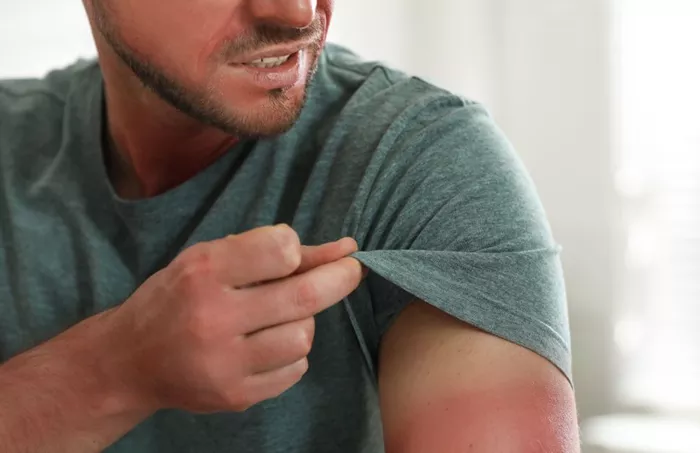Skin cancer is the most common cancer worldwide, with one in five people expected to be diagnosed by age 70. It primarily falls into two categories: melanoma, the deadliest type, and nonmelanoma, which is more common but generally less aggressive.
Men are particularly vulnerable. According to Dr. S. Tyler Hollmig, Director of Dermatologic Surgery at The University of Texas at Austin Dell Medical School, men often neglect proper skin care compared to women. They tend to skip sunscreen, avoid sun-protective clothing, and rarely undergo self-examinations or dermatology visits. Many men also work outdoors, increasing their sun exposure risk.
Melanoma is notably more frequent and deadly in men. Of the estimated 104,960 new melanoma cases in 2025, around 60,550 will be men. Moreover, men account for nearly two-thirds of melanoma-related deaths, highlighting the urgent need for awareness.
Fortunately, skin cancer is highly treatable, especially when caught early. Nonmelanoma skin cancers have excellent outcomes, and melanoma detected in its earliest stage has a five-year survival rate of about 97%.
Understanding Common Skin Cancer Types
Basal Cell Carcinoma (BCC)
This is the most common skin cancer, making up roughly 80% of cases. It originates in basal cells at the bottom layer of the epidermis. BCCs often appear as pink or skin-colored growths that may be scaly or bleed. Common locations include the face, neck, and arms. Pigmented BCCs, which can look like dark moles, may also occur.
While BCC rarely proves fatal, having one increases the risk of developing additional lesions. Treatments include surgical removal, freezing, or specialized Mohs surgery, especially for sensitive areas like the nose and eyes, preserving healthy tissue.
Squamous Cell Carcinoma (SCC)
Accounting for about 20% of skin cancers, SCC develops from squamous cells in the epidermis’s upper layer. It may resemble a persistent pimple or scaly patch that bleeds easily. If a “pimple” lasts over four weeks without healing, it should be evaluated by a doctor. SCC can grow deeper and spread if untreated, making early diagnosis essential.
Treatment options mirror those for BCC, including surgery, freezing, and topical therapies. When detected early, SCC is generally curable.
Melanoma
Though only about 1% of skin cancers are melanoma, this form causes the most deaths. Melanoma begins in pigment-producing melanocytes and can appear as an asymmetrical mole with irregular borders and multiple colors. The ABCDE rule (Asymmetry, Border, Color, Diameter, Evolving) helps identify suspicious spots.
Early detection dramatically improves survival rates, which decline significantly if the melanoma spreads. Treatment depends on cancer stage and may involve surgery, chemotherapy, radiation, or immunotherapy.
Rare But Serious Skin Cancers
Merkel Cell Carcinoma
A rare, aggressive cancer affecting nerve-related cells near the skin’s surface, it grows quickly and mainly affects men over 50 with fair skin. It appears as painless red or violet lumps and requires prompt treatment including surgery and possibly chemotherapy or radiation.
Sebaceous Carcinoma
This aggressive cancer arises from oil glands, typically around the eyelids in older adults. It appears as painless bumps and is more common in men. Early-stage detection yields better outcomes, often treated with Mohs surgery.
Dermatofibrosarcoma Protuberans (DFSP)
A slow-growing cancer starting in the skin’s middle layer, it rarely spreads. DFSP looks like a small bump or scar and is treated surgically with excellent survival rates.
Warning Signs: Precancerous Skin Changes
Actinic Keratoses (AKs)
These are rough, scaly patches caused by sun damage, considered precancerous. AKs appear as variously colored spots or rough patches on sun-exposed areas. Removing them prevents progression to cancer. Regular skin checks are advised for monitoring.
How Skin Cancer Is Diagnosed
A dermatologist usually begins with a physical exam using a dermatoscope, a handheld microscope to closely inspect skin lesions. Suspicious areas are biopsied by removing a small skin sample for lab analysis. Biopsy results confirm whether a lesion is benign or malignant but do not cure the cancer—further treatment is necessary if cancer is present.
6 Practical Ways Men Can Protect Their Skin
Avoid Peak Sun Hours: Limit sun exposure between 10 a.m. and 4 p.m., when UV rays are strongest.
Wear Protective Clothing: Use wide-brimmed hats and long sleeves rather than just baseball caps to shield face and neck.
Apply Sunscreen Regularly: Choose an SPF 30+ product that feels like a moisturizer for easy daily use, and reapply every two hours. Tinted moisturizers provide extra coverage while concealing blemishes.
Use Adequate Amounts: Apply about one ounce (a shot glass full) for the body and a nickel-sized amount for the face and neck.
Get Annual Skin Exams: A yearly full-body skin check by a dermatologist is crucial, especially for men with fair skin, red or blonde hair, many freckles, history of sunburns or tanning bed use, immune system issues, or a family history of skin cancer.
Support Your Immune System: Maintain a healthy lifestyle—avoid smoking, eat plenty of fruits and vegetables, reduce stress, get enough sleep, and exercise regularly—to help your body fight cancer.
Conclusion
Men face a higher risk of skin cancer but can greatly reduce it by adopting simple habits and staying vigilant. Early detection saves lives, and with proper care, you can enjoy outdoor activities safely while protecting your skin for years to come.
Related topics:
- Many Men Hide Money Struggles, Risking Health and Relationships
- What Every Man Should Know About Skin Cancer Risks and Prevention
- 13 Common Bathing Mistakes That Can Harm Your Skin and Health


